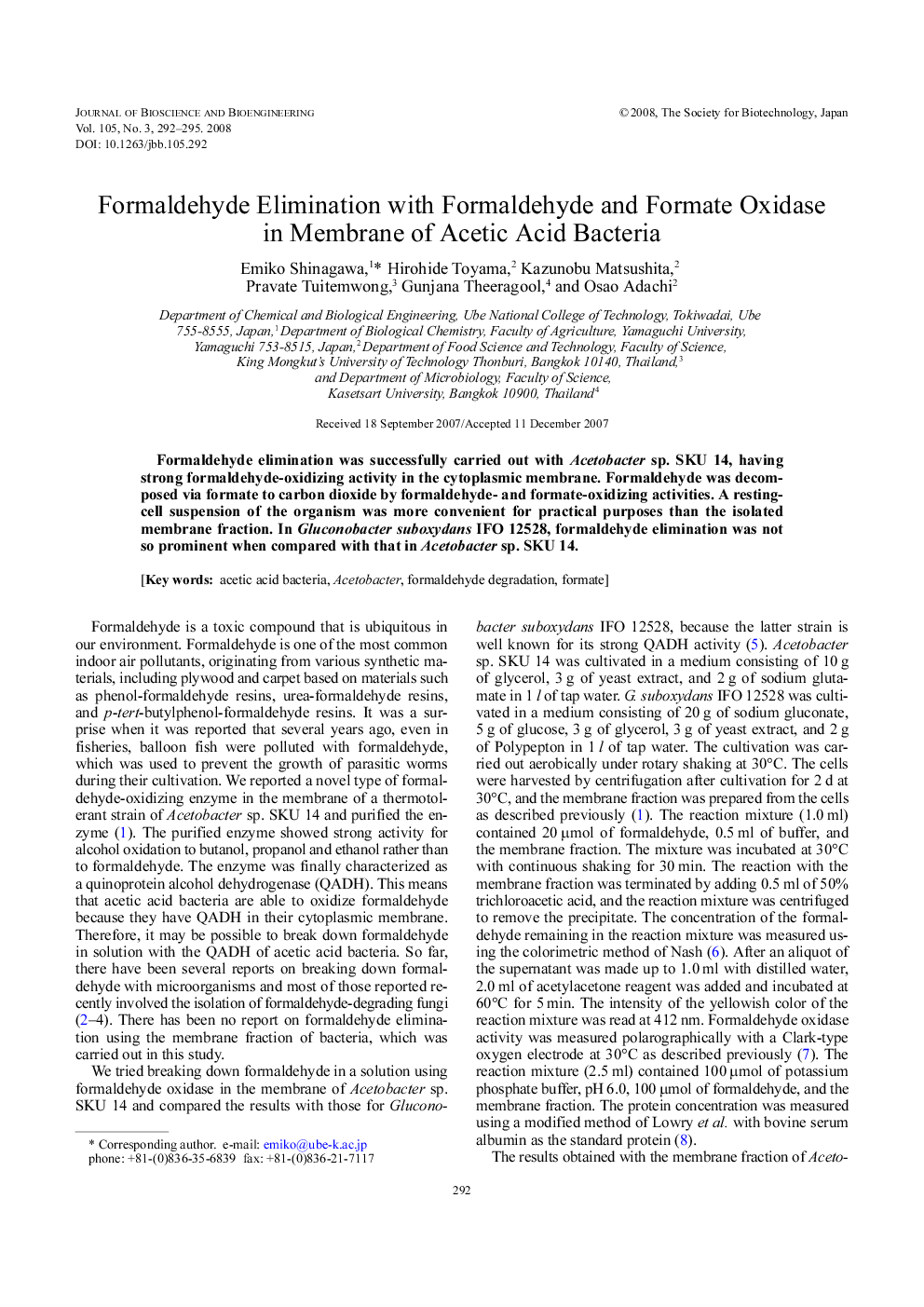| Article ID | Journal | Published Year | Pages | File Type |
|---|---|---|---|---|
| 22425 | Journal of Bioscience and Bioengineering | 2008 | 4 Pages |
Abstract
Formaldehyde elimination was successfully carried out with Acetobacter sp. SKU 14, having strong formaldehyde-oxidizing activity in the cytoplasmic membrane. Formaldehyde was decomposed via formate to carbon dioxide by formaldehyde- and formate-oxidizing activities. A resting-cell suspension of the organism was more convenient for practical purposes than the isolated membrane fraction. In Gluconobacter suboxydans IFO 12528, formaldehyde elimination was not so prominent when compared with that in Acetobacter sp. SKU 14.
Related Topics
Physical Sciences and Engineering
Chemical Engineering
Bioengineering
Authors
Emiko Shinagawa, Hirohide Toyama, Kazunobu Matsushita, Pravate Tuitemwong, Gunjana Theeragool, Osao Adachi,
